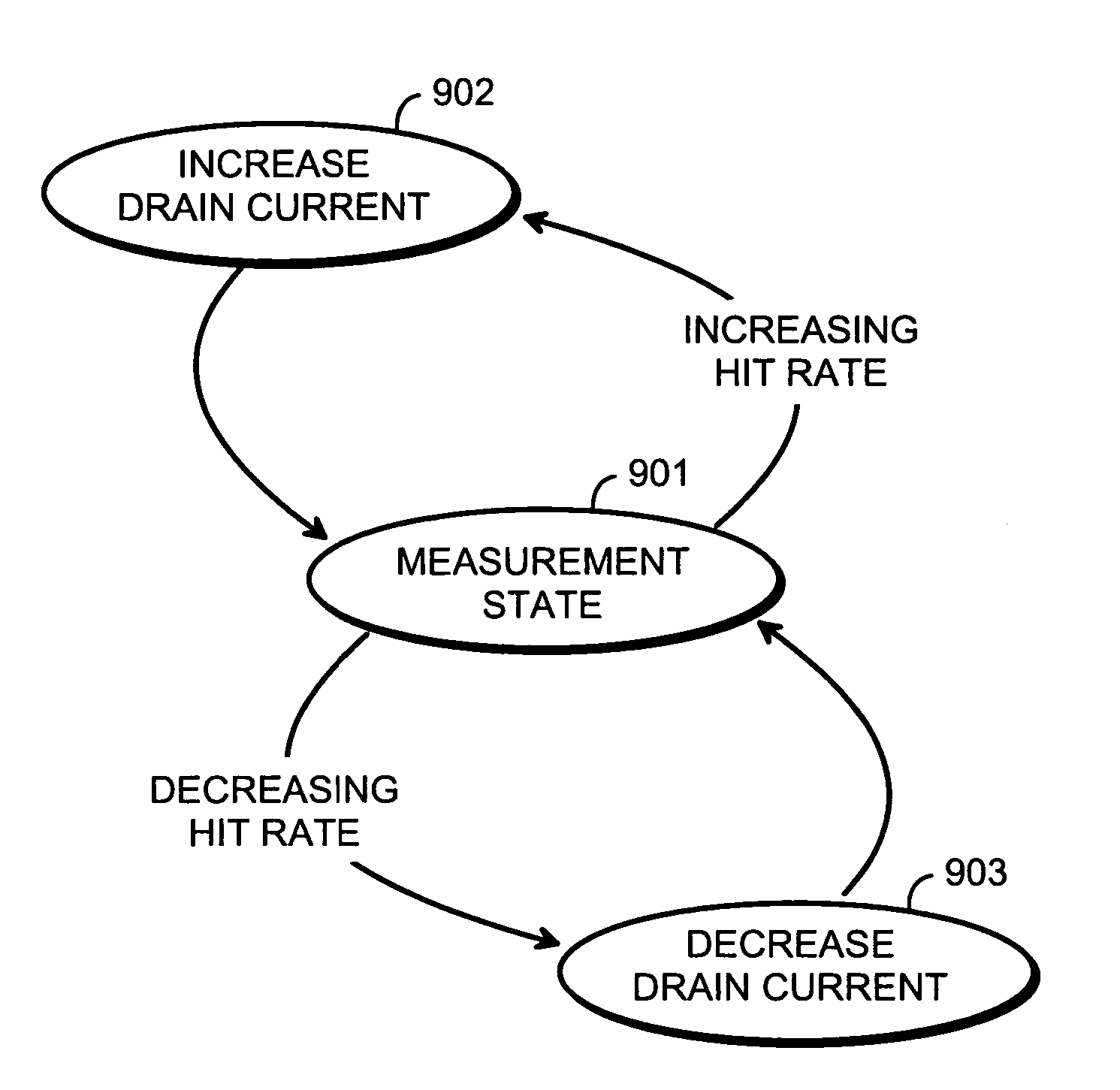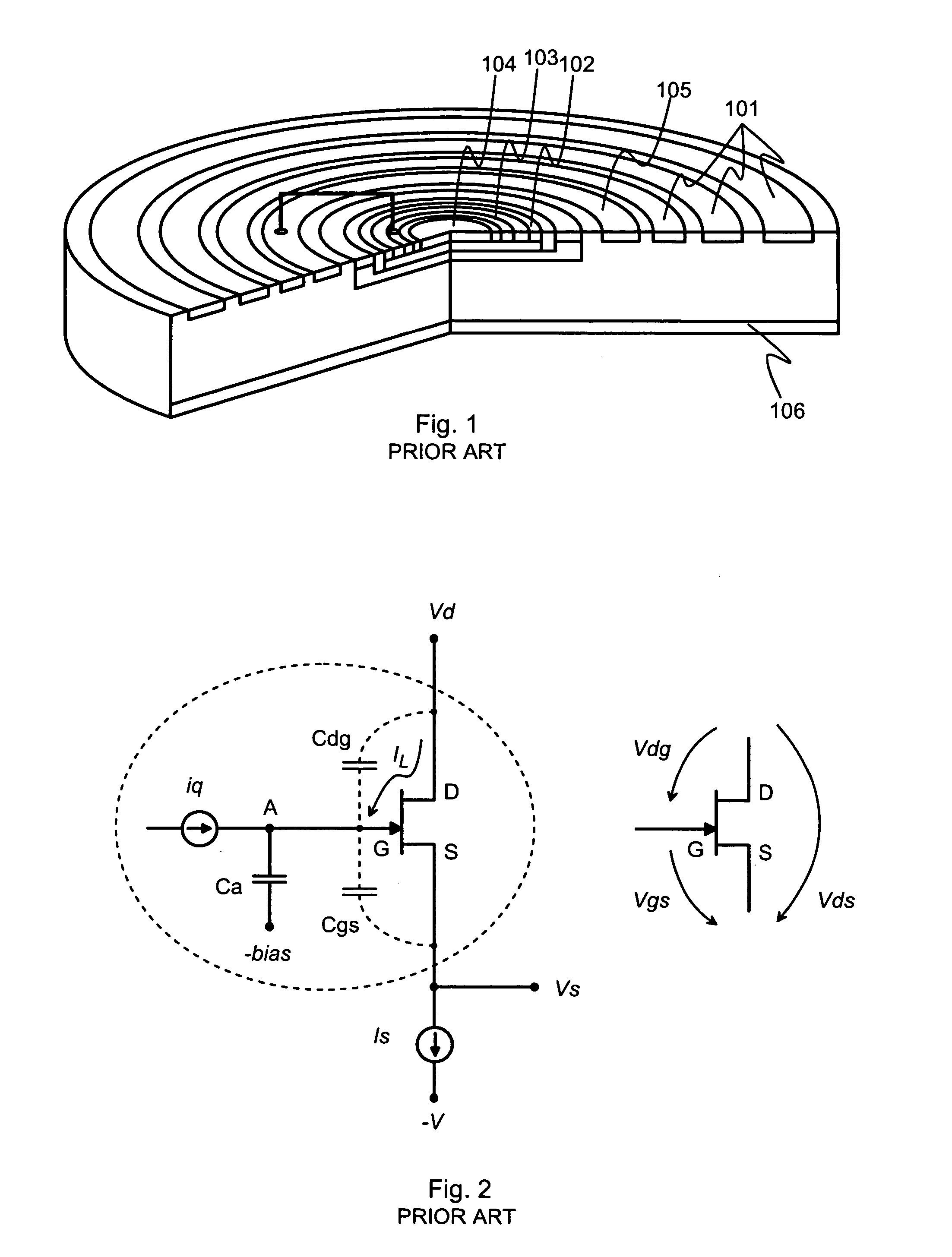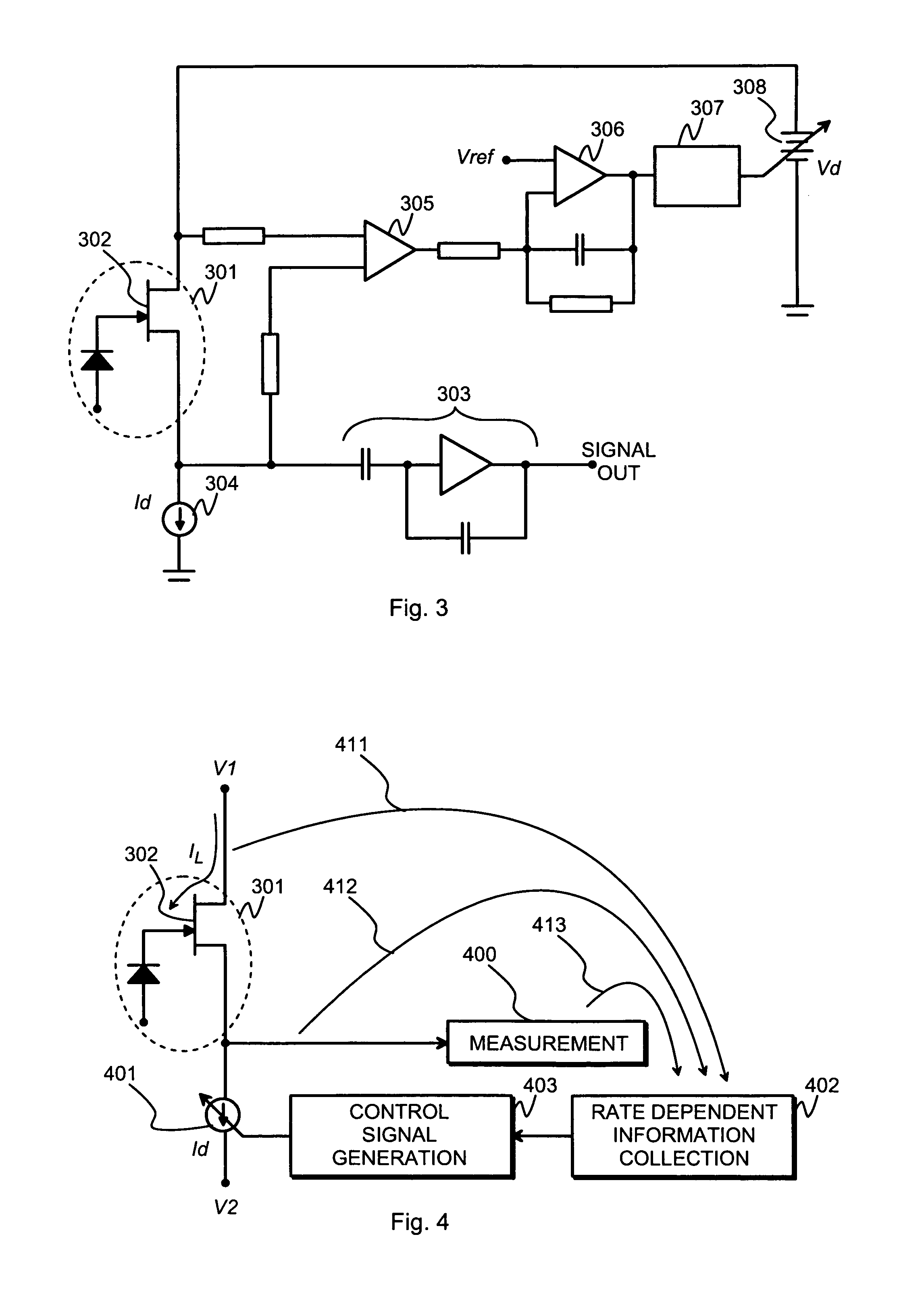Method and circuit arrangement for compensating for rate dependent change of conversion factor in a drift-type radiation detector and a detector appliance
a conversion factor and detector technology, applied in the direction of radiation intensity measurement, instruments, x/gamma/cosmic radiation measurement, etc., can solve the problem of difficult linearization circuit b>, circuit may be somewhat slow to react to changes in the photon hit rate, and the rate dependent shift in peak positions
- Summary
- Abstract
- Description
- Claims
- Application Information
AI Technical Summary
Benefits of technology
Problems solved by technology
Method used
Image
Examples
Embodiment Construction
[0037]From the scientific publication of E. Elad mentioned above we may draw an expression for the leakage current IL:
[0038]IL=Id·α·Vds·ⅇ-βVds(3)
where α and β are material—and temperature dependent constants. This expression is illustrative in two ways. Firstly, it confirms the statement made above about the complicated nonlinear relationship between IL and Vds, which makes it difficult to achieve satisfactory results by tampering with the value of Vds, which we attempted in FIG. 3. Secondly expression (3) shows that the dependency between IL and Id is much simpler, even linear. We may thus deduce that it is possible to compensate for a purely rate dependent distortion of IL by causing a comparable distortion to Id, so that as a result Vds assumes the value it would have without said rate dependent distortion of IL.
[0039]FIG. 4 illustrates schematically an arrangement in which a drift type detector chip 301 is used for detecting radiation. A FET 302 on the drift type detector chip 3...
PUM
 Login to View More
Login to View More Abstract
Description
Claims
Application Information
 Login to View More
Login to View More - R&D
- Intellectual Property
- Life Sciences
- Materials
- Tech Scout
- Unparalleled Data Quality
- Higher Quality Content
- 60% Fewer Hallucinations
Browse by: Latest US Patents, China's latest patents, Technical Efficacy Thesaurus, Application Domain, Technology Topic, Popular Technical Reports.
© 2025 PatSnap. All rights reserved.Legal|Privacy policy|Modern Slavery Act Transparency Statement|Sitemap|About US| Contact US: help@patsnap.com



